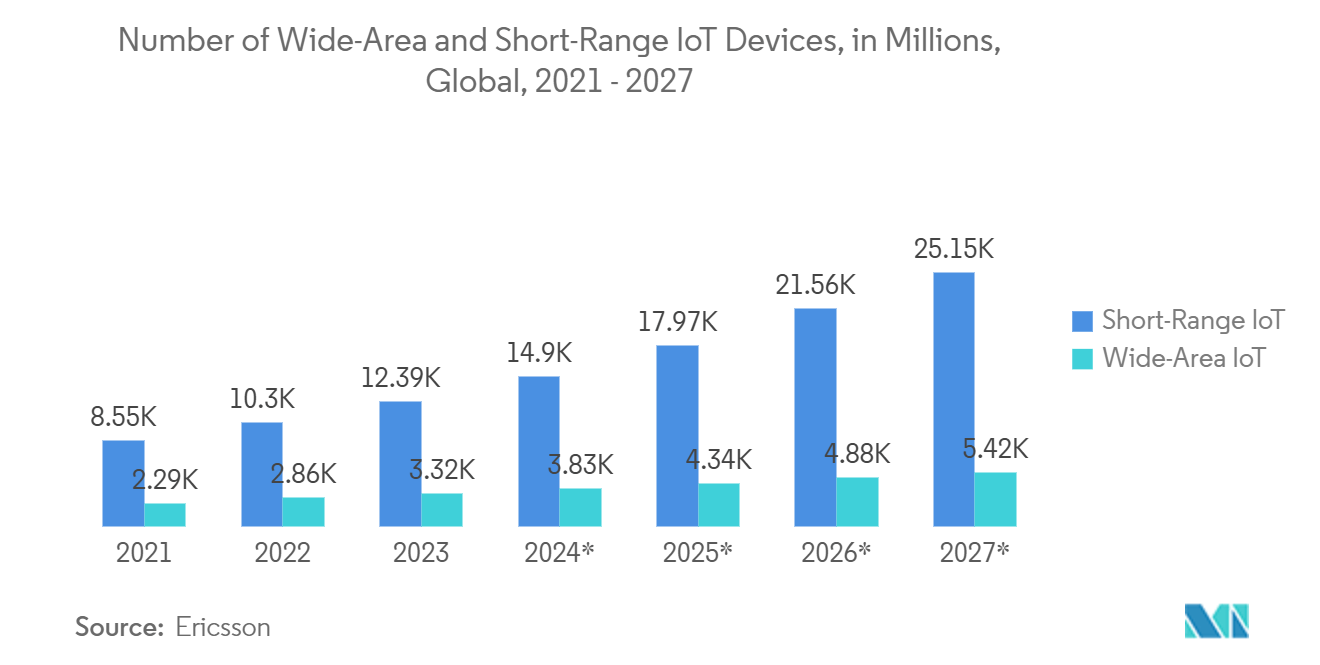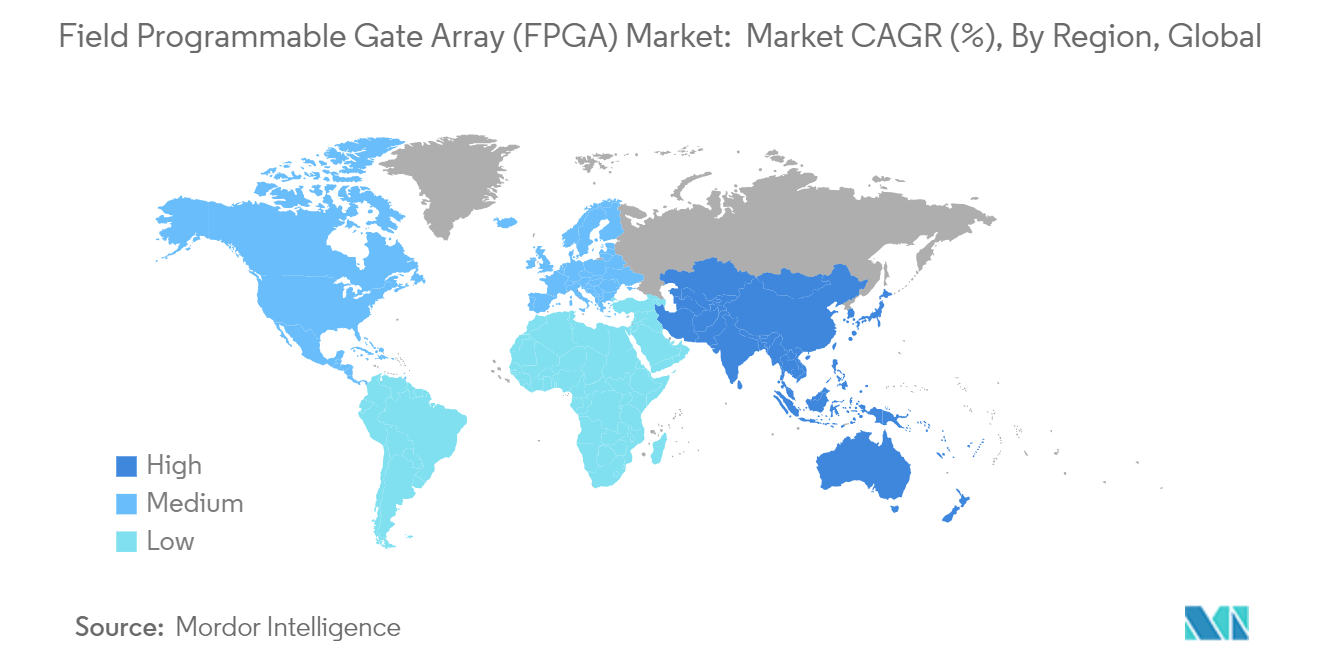Market Trends of Field Programmable Gate Array (FPGA) Industry
IT and Telecommunication Holds Significant Market Share
- IT and telecommunication companies leverage FPGAs for high-performance computing applications, such as artificial intelligence (AI) and machine learning (ML). FPGAs support customized algorithms for tasks like image recognition, natural language processing, and big data analytics, often more efficiently than traditional CPUs and GPUs.
- 5G networks are rapidly expanding, necessitating high-speed and low-latency data processing for optimal performance. FPGAs are ideally positioned to fulfill these demands, especially in 5G base stations and edge computing. They accelerate data processing and adeptly manage the surge in traffic. With the continuous evolution of 5G infrastructure, the appetite for FPGAs in core and edge applications is on the rise.
- According to projections by GSMA, by 2030, China will boast over 1.6 billion 5G connections, representing nearly a third of the global tally. In addition, VIAVI Solutions highlights that by April 2023, the U.S. led globally with 5G network access spanning 503 cities, outpacing China's 356 cities. These developments are poised to unlock significant market opportunities.
- As data traffic surges and the number of connected devices, particularly in IoT and telecommunications, continues to grow, the importance of network security and swift data processing has never been more pronounced. FPGAs, with their capability for hardware-accelerated encryption and secure data processing, adapt swiftly to evolving security demands. This adaptability makes them indispensable for network operators safeguarding vast data while navigating intricate processing challenges.
- The expanding realm of IoT, especially within telecommunications, underscores the demand for versatile, energy-efficient computing solutions adept at managing diverse data streams from myriad devices. FPGAs are carving a niche in IoT gateways and edge computing, enabling local data processing that curtails latency and conserves bandwidth.

Asia Pacific to Register Major Growth
- China's field programmable gate array market has transitioned from heavy reliance on international suppliers to cultivating a robust domestic ecosystem, all in a bid to curtail import dependency. Geopolitical factors, notably trade tensions and export controls, have accentuated the urgency for technological self-reliance. Consequently, domestic players like GOWIN Semiconductor, Shenzhen Pango Microsystems Co., Ltd, and Shanghai Anlogic Infotech Co., Ltd, among others, have risen to prominence, channeling their efforts into innovations to rival established global entities. Furthermore, the market has witnessed a surge in R&D investments, aiming to craft sophisticated FPGAs tailored for high-end applications.
- The advent of 5G technology has emerged as a pivotal catalyst for FPGA adoption in China. With their prowess in efficient data processing and signal transmission, FPGAs have become indispensable in base stations and broader network infrastructures. The count of base stations skyrocketed from 0.15 million in 2019 to 3.38 million in 2023. Data from China's Ministry of Industry and Information Technology reveals that by the close of August 2024, the nation had eclipsed 4.04 million 5G base stations, accounting for 32.1% of the country's total mobile base stations. Additionally, the ministry highlighted that China's 5G mobile subscriber count reached an impressive 966 million.
- Japan, renowned for its leadership in robotics, automotive, electronics, and high-precision manufacturing, has harnessed FPGA technology to bolster its competitive edge. Local manufacturers, including Renesas Electronics Corporation, NEC Corporation, and Socionext Inc., have increasingly contributed to the country's field programmable gate array market, which plays a pivotal role in Japan's advanced technology ecosystem.
- Amid the escalating technological rivalry between the United States and China, Japan is strategically bolstering its semiconductor industry. The nation is channeling 0.71% of its gross domestic product (GDP), equating to USD 25.7 billion, into the semiconductor sector from 2022 to 2025. This investment commitment stands out, being notably more substantial than the state subsidies provided by other industrial nations to their semiconductor sectors.
- The field programmable gate array market in India has transitioned from limited academic and niche industrial applications to widespread adoption in sectors like telecommunications, automotive, and aerospace. With a USD 250 billion IT industry, India is not only a significant player in the global AI ecosystem but also caters to many of the world's banks, manufacturers, and firms.


